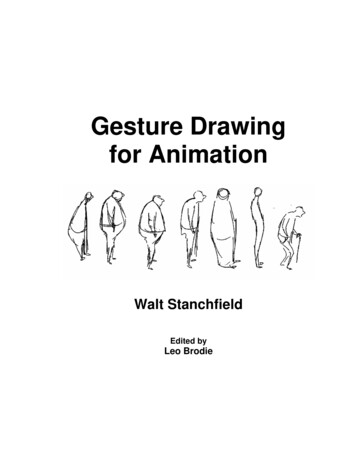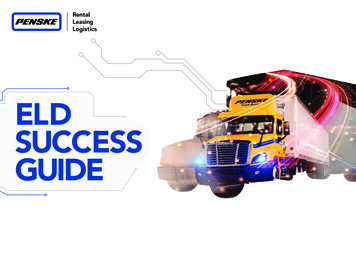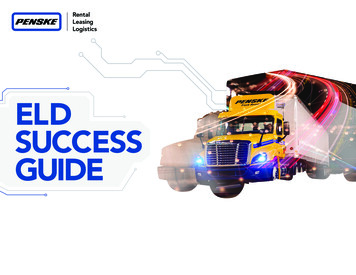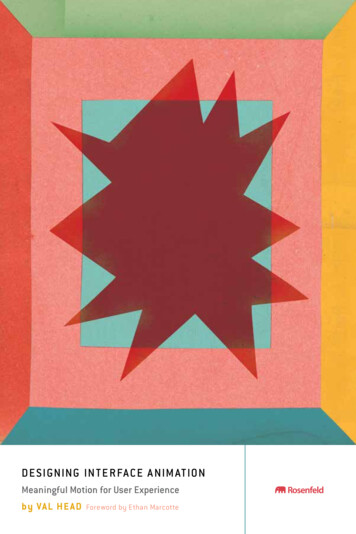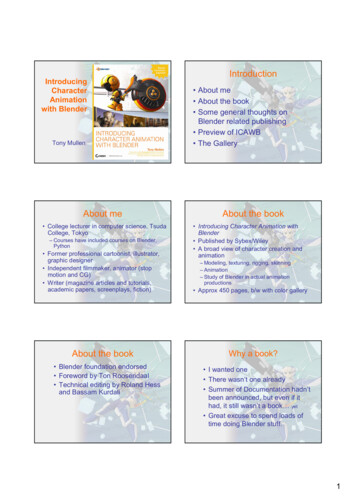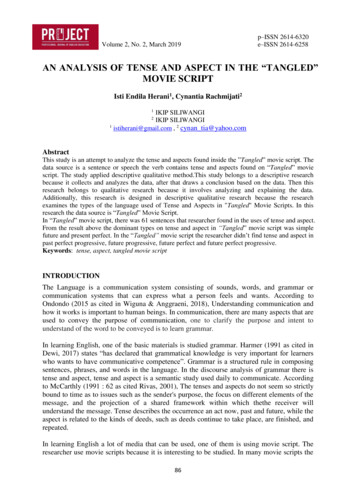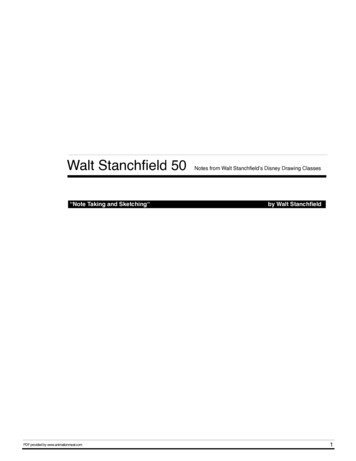
Transcription
Walt Stanchfield 50“Note Taking and Sketching“PDF provided by www.animationmeat.comNotes from Walt Stanchfield’s Disney Drawing Classesby Walt Stanchfield1
“Note Taking and Sketching“NOTE TAKING AND SKETCHINGIf you haven't been a note taker--become one. Hundreds of potentially fertile ideas havedrifted through your consciousness and have spun out into oblivion to be lost forever. Youoften hear or see things that, like a potent horseradish sauce clearing the sinuses, sparks aclear vision of some illusive point, perhaps some clearer way to draw a wrinkle or some betterway to draw hands or knees. It seems so clear at the time there seems to be no reason tomake a note of it. Many, perhaps dozens of ideas have bombarded your sensitive receptorsduring the day (and night), the overload adjusting itself in favor of a few of the mostimpressive messages, not always the most useful. So write them down, or sketch them, theymay prove very valuable at a later date. A seasoned note taker will often hear a seeminglydull bit of information and, either on the spot or later, translate it into a meaningful bit ofwisdom. Once down in writing or in drawing form it can be like a seed planted in fertile soil,burgeoning into growth when given the proper inducement.Taking notes, like sketching, sharpens the mind, hones it into a more sensitive and receptiveinstrument, more ready when needed than one that is allowed to "flow with the tide". It can bethe difference between being a reactor or an actor. The reactor drifts along awaitingopportunities from others before making a move. The actor checks his notes and comes upwith a positive move of his own. Most, if not all, artists, composers, authors, scientists, etc.have been and are avid note takers and sketchers.A three ring, loose leaf note book with unlined paper is ideal for writing, sketching, and storingnotes in. It may be too large to carry with you everywhere, so augment it with a small notepad that will fit into a pocket or purse. The notes taken in the small pad can be removed andtaped or glued into the larger book. Record the source, or initial those of your own origin--alsothe date. it will be a great focus of learning, a pleasurable hobby, and will help keep yourmind alert for new ideas and to new vistas of creative thinking.Heres how Robert Kaupelis puts it in his book, Learning to Draw: " I suggest that you wedyourself so thorough to your sketchbook that it almost becomes a physical extension ofyourself. And now what you must do is draw and draw and look at drawings and draw anddraw and draw and look at drawings and draw ."In a book on cartooning by Al Ross, Cartooning Fundamentals, he says, " Finally, I cannotstress too strongly the value of carrying a sketch book at all times. In it you can record notesand ideas and, above all, a continuous record of your development as an artist or cartoonist."Your note/sketch book can an should contain both writing and sketching. Memories are oftenuseful in creative work. Present day experiences are worthy of recording, saved and savored.Jot down only the pertinent details.PDF provided by www.animationmeat.comWalt Stanchfield 50: “Note Taking and Sketching” : By Walt Stanchfield2
“Note Taking and Sketching“Sketch scenes, expressions -- make comments beneath the sketches. Describe people youknow and meet. Don't correct your impressions later--better to write or draw new ones.Develop your senses by becoming aware of them. Record them in a straightforward mannerand/or caricature them to some humorous extreme. What you will be doing is sharpening yoursensibilities, increasing your susceptibility to impressions, refining your ability to perceive andto transpose them into graphic form. Soon you will find yourself exploring your world forimpressions and the recording of them will buoy you up mentally, physically, and spiritually.Remember my formula for this: impression - expressions depression. So become a notetaker, start collecting things--not through one ear or eye and out the other, but graphically,through your fingers which are the things you have chosen to express yourself through. Copywords, phrases, bits of articles, drawings, paintings, anything that awakens a spark in you.That great teacher Robert Henri ( Art Spirit) said, "He (the artist) moves through life as hefinds it, not passing negligently the things he loves, but stopping to know them, and to notethem down in the shorthand of his sketch book . He is looking for what he loves, he tries tocapture it. It's found anywhere, everywhere. Those who are not hunters do not see thesethings. The hunter is learning to see and to understand--to enjoy."One more quote and then we'll take a break with some examples of sketch books.From the book, Cartooning For Everybody, by Lariar, this excerpt: "Sketching is sketching. Itinvolves a model, usually, whether the model is a buxom nude or an old tomato can. It iscopying, after a fashion. The cartoonist, when he sketches, is going through a process ofstudy. He concentrates upon the model, plumbs its movement, bulk, outline. Then he wartsonly,. the spirit--the guts of the thins he's after. He puts into his drawing all his experiments.He isn't concerned with anatomy, chiaroscuro or the symmetry of "flowing line." There'snothing highbrow about his approach to the sketch pad. He is drawing-because he likes todraw! All types of sketching benefit the artist. Never stop sketching! Sketch at home, in thesubway, on picnics, in art school or in bed. But SKETCH!PDF provided by www.animationmeat.comWalt Stanchfield 50: “Note Taking and Sketching” : By Walt Stanchfield3
“Note Taking and Sketching“Arming yourself with a sketchbook will put you at the ready when opportunities presentthemselves. One day wile searching for driftwood and shells (for my driftwood mobiles andseaweed (for my wife's basket-making), I ran into this group of kite flyers at the beach.From the sketch book of Al Ross, Cartoonist.PDF provided by www.animationmeat.comWalt Stanchfield 50: “Note Taking and Sketching” : By Walt Stanchfield4
“Note Taking and Sketching“A good way to take notes or gather your thoughts on any subject is to state the problem orsubject at the center and circle it. Then as related thoughts come or as you gather research,attach them to the center by a line and into groups that are more closely related. It's awonderful means of focusing the mind.I was working on aninspirational book for artistswho find themselves in thedoldrums.These suggestions for a titlecould have been jotted downin a restaurant or whiledriving.PDF provided by www.animationmeat.comWalt Stanchfield 50: “Note Taking and Sketching” : By Walt Stanchfield5
“Note Taking and Sketching“These were done inside a cardboard template with the eyes closed. The borders wereadded later. Good exercise!These were done with the eyes open.PDF provided by www.animationmeat.comWalt Stanchfield 50: “Note Taking and Sketching” : By Walt Stanchfield6
PDF provided by www.animationmeat.com Walt Stanchfield 50: “Note Taking and Sketching” : By Walt Stanchfield 4 “Note Taking and Sketching“ Arming yourself with a sketchbook will put you at the ready when opportunities present themselves. One day wile searchi



